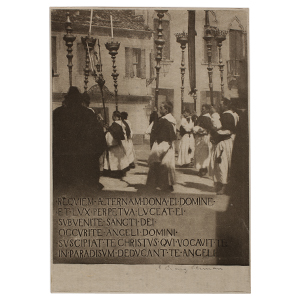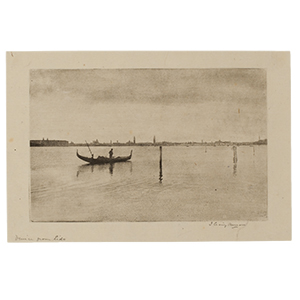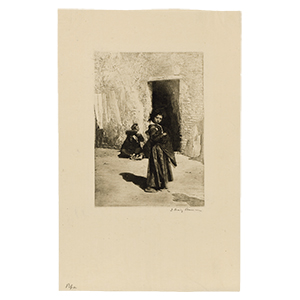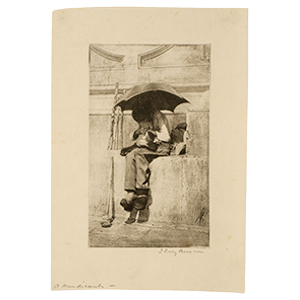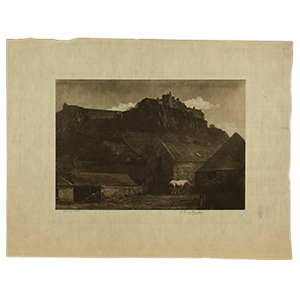J. Craig Annan
Scottish, 1864–1946
James Craig Annan learned photography as a boy: his father, Thomas Annan, was a photographer and owned a photographic print firm, T. R. Annan and Sons, which J. Craig later successfully took over. In 1883 father and son traveled to Vienna to learn the then-secret process of photogravure from its inventor, Karel Klíč. Annan became an expert in the technique and made prints for others—including numerous gravures from the negatives of David Octavius Hill and Robert Adamson, to which he had access through his father’s connections to Hill.
Annan began making his own photographs around 1891 and quickly gained acclaim for his work. He was elected in 1894 to the Linked Ring, a group of British Pictorialists, and soon began a correspondence with Stieglitz, who reproduced his photographs in both Camera Notes and Camera Work. Stieglitz praised Annan’s work as “sane, honest, temperamental” and included him in a 1906 showcase of British photography in the Little Galleries of the Photo-Secession alongside Frederick H. Evans and Hill and Adamson.[1]
Annan published and lectured widely on the subject of artistic photography and exhibited his work at numerous international exhibitions around the turn of the century. He made pastoral landscapes as well as street scenes, using a smaller, handheld camera to capture interesting moments. An expert printmaker, he produced most of his work as photogravures, manipulating the plate to mimic the appearance of etchings or aquatints and frequently adding snippets of text. In 1896 he published a portfolio of eleven photogravures, Venice and Lombardy, five of which are represented in the Art Institute’s Stieglitz Collection.
[1] Alfred Stieglitz, “Some Impressions of Foreign Exhibitions,” Camera Work 8 (1904), p. 35.

